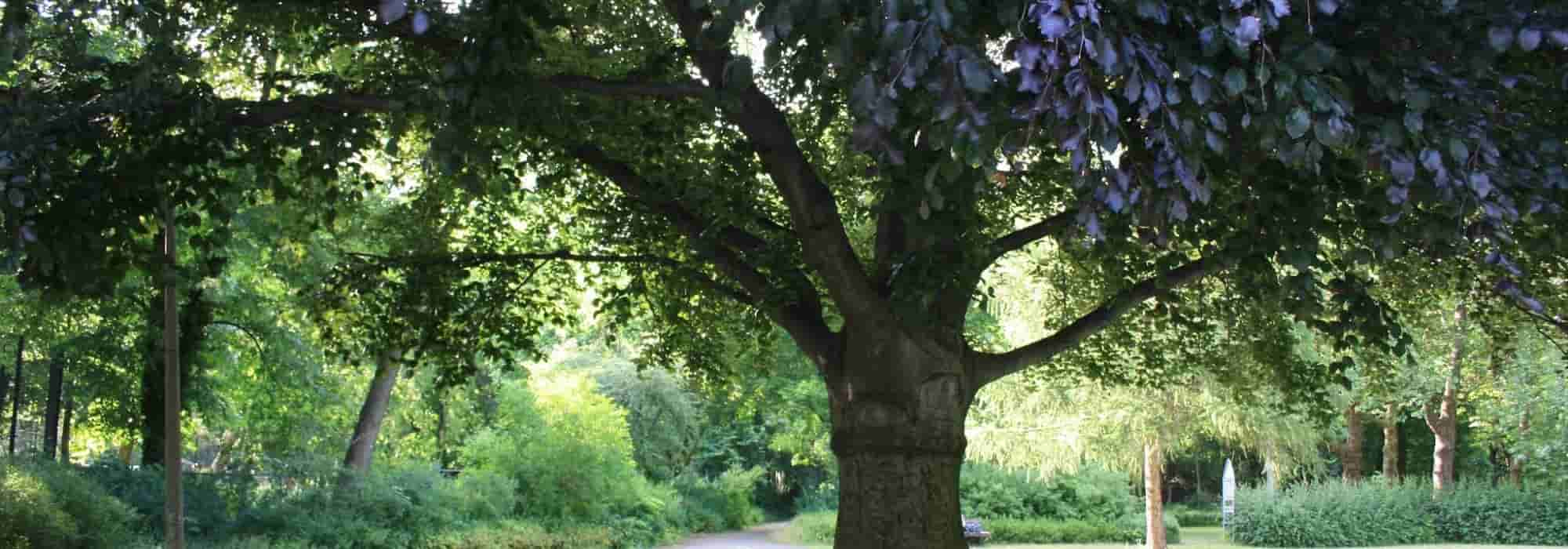
How to calculate the age of a tree without cutting it down?
There are simple methods to determine the age of a tree without cutting it down
Contents
Why want to know the age of a tree? The first reason is certainly simple curiosity during a walk in the woods with children. Calculating the age of a tree can indeed be fun and educational. But more practical reasons can also be considered: a dispute with a neighbour troubled by overly intrusive foliage, an assessment of the stability of species, calculations of volume in terms of timber sales… Nevertheless, it is sometimes necessary to determine the age of a tree without cutting it down. How can this be done? We explain the different methods of dating a tree.
The growth of trees
A tree grows in height, but also in diameter. Indeed, its branches elongate, drawn towards the light, while the trunk increases in circumference. This is to support the foliage and branches. This growth is never uniform and depends on numerous environmental and physical factors.
Thus, the location where the tree grows affects its growth. A tree planted in a forest will grow faster than the same tree planted in an urban environment. The nature and structure of the soil, drainage, exposure to light, drought, the presence of a slope, altitude… can greatly influence the development of a particular species of tree. Not to mention unforeseen events such as injury, disease, a particularly cold frost period, a storm… or purely biological factors such as its own rooting capabilities, growth potential, resistance to diseases…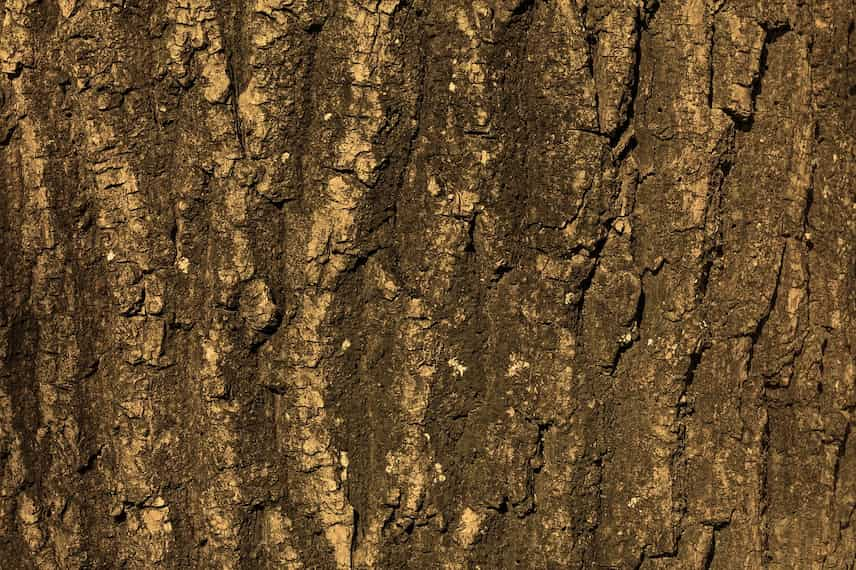 The trunk of a tree increases by approximately 2.5 cm per year
The trunk of a tree increases by approximately 2.5 cm per year
The growth of a tree is therefore often unpredictable, but specialists estimate that a trunk increases on average by 2.5 cm per year. This growth occurs mainly during the growing season, which varies by species, from spring to summer.
Read also
Evergreen tree and shrub: what are they?Easy to calculate the age of a cut tree!
Who has never enjoyed counting the visible tree rings on a tree stump? This is how we calculate a tree’s age. Why? On a stump, we can easily observe three main zones of different colours and textures. First, there is the bark. Next comes the sapwood, the light and living part of the wood, which is found beneath the bark between the cambium, which forms the layer of generative cells of the wood, and the heartwood, that is to say, the core of the wood. This is the darkest part where the growth rings of the wood are distinguished.
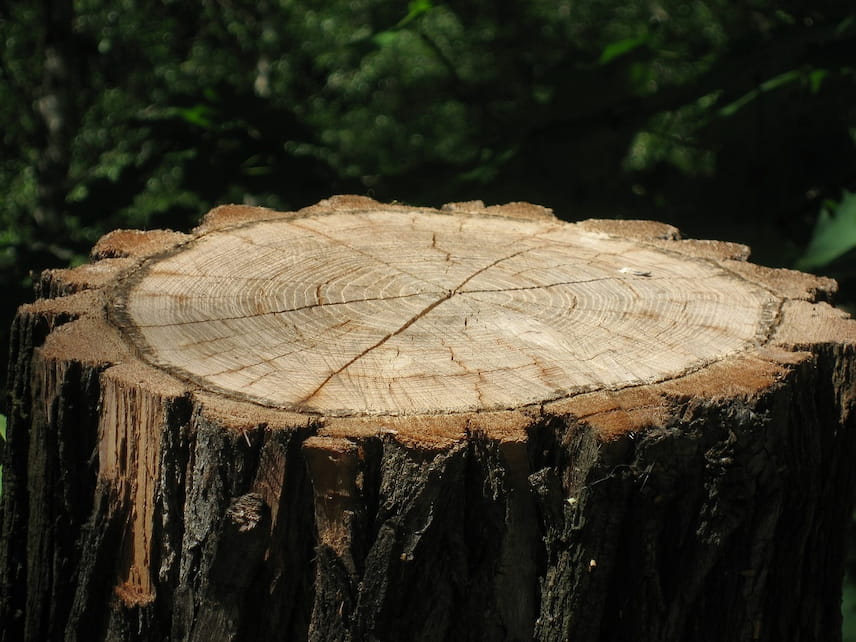 On this stump, the bark, sapwood, and heartwood are clearly visible
On this stump, the bark, sapwood, and heartwood are clearly visible
Looking more closely at these rings, one can see an alternation of light and dark circles. The light circles correspond to spring wood, a period of rapid growth, while the dark circles correspond to summer wood, when growth slows down. In autumn and winter, the wood enters dormancy and stops growing. Therefore, counting each ring of a tree trunk amounts to calculating the number of years of growth, that is to say, its age.
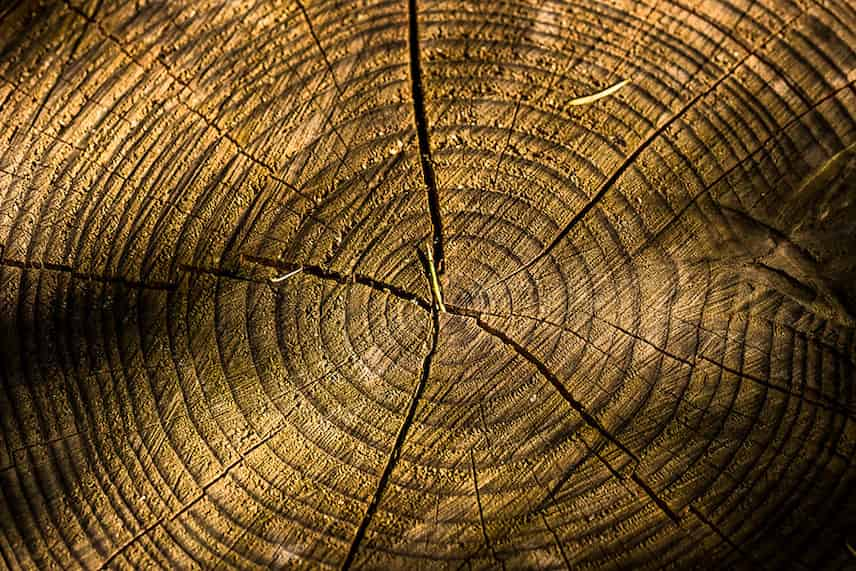 The number of circles indicates the age of the tree
The number of circles indicates the age of the tree
Discover other Trees and large shrubs
View all →Available in 0 sizes
Available in 1 sizes
Available in 1 sizes
Available in 1 sizes
Available in 1 sizes
Available in 1 sizes
Available in 1 sizes
Available in 2 sizes
Available in 1 sizes
Available in 1 sizes
How to calculate the age of a living tree?
Rest assured, it is not obligatory to fell a tree to calculate its age. By using a flexible measuring tape, you can easily determine the approximate age of a tree. Here’s how:
1- Determine the circumference of the tree:
- Stand facing the tree and measure 1.30 m from the ground. This height is standardised to allow for consistent comparisons between different trees.
- At this height, wrap the measuring tape around the trunk to measure its circumference. Ensure that the measuring tape is flat against the trunk and note the measurement in centimetres.
2- Determine the diameter of the tree from the circumference:
- Once you have your circumference, we will calculate the diameter of the tree. To do this, apply this formula:
Diameter = Circumference ÷ π (π, pronounced Pi, has an approximate value of 3.14)
- Next, to obtain the radius, divide the diameter by 2:
Radius = Diameter ÷ 2
Let’s take an example:
I have an oak tree with a circumference of 100 cm. So I do:
diameter = 100 ÷ π = 100 ÷ 3.14 = 31.84 cm
My diameter is therefore 31.84 cm.
Next, I calculate my radius:
Radius = 31.84 ÷ 2 = 15.92 cm
The radius of my tree is therefore 15.92 cm.
3- Subtract the bark for more accuracy
From the obtained radius, subtract the thickness of the bark. Remove 2 cm from the radius for trees with thick bark (oak, pine, etc.) and 1 cm for trees with thin bark (birch, etc.). If in doubt, subtract 2 cm.
Let’s return to the example:
For my oak, I have a radius of 15.92 cm from which I subtract 2 cm of bark. I therefore get 15.92 – 2 = 13.92 cm of radius without bark.
4- Determine the growth factor of the tree
The growth factor is the coefficient that represents the rate at which a tree grows under specific conditions. It is important to note that each species of tree has its own growth rate, which affects the accuracy of the age estimation. Here are some examples of growth factors for different tree species:
- Oak : Approximately 1.25 cm per year
- Maple (Acer) : Approximately 1.5 cm per year
- Maritime pine : Approximately 0.5 cm per year
- Birch (Betula) : Approximately 1 cm per year
- Ash (Fraxinus) : Approximately 1.8 cm per year
- Fir (Abies) : Approximately 0.7 cm per year
- Beech (Fagus sylvatica) : Approximately 0.9 cm per year
- Linden (Tilia) : Approximately 1.2 cm per year
These figures are estimates and may vary depending on environmental conditions, region, soil type, and other factors.
Note: if you do not know the species of the tree, use the factor of 1 cm per year
5- Multiply the radius by the growth factor
Once you have all this information, apply this formula to calculate its age:
Let’s return to the example:
If the radius of my oak is 13.92 cm without bark and its growth factor is 1.25 cm/year, then:
Estimated age = 13.92 1.25 = 17.4
The estimated age of my oak is approximately 17 years.
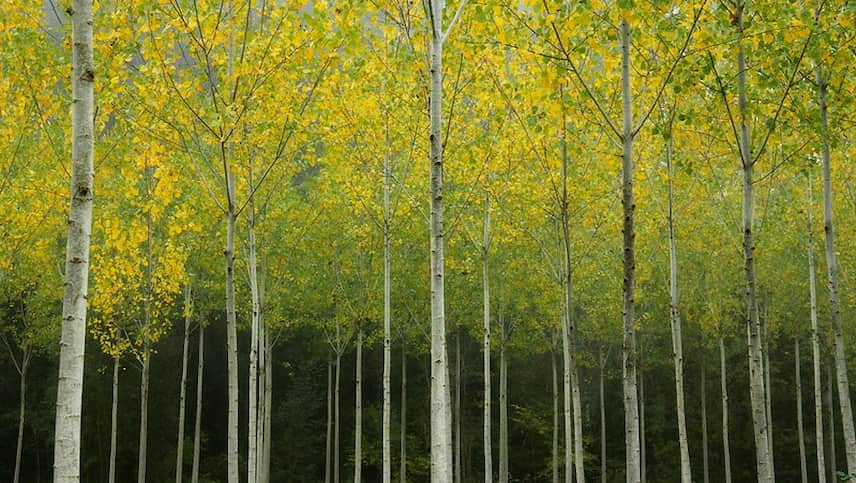 Poplar is one of the fastest-growing trees
Poplar is one of the fastest-growing trees
- Subscribe!
- Contents
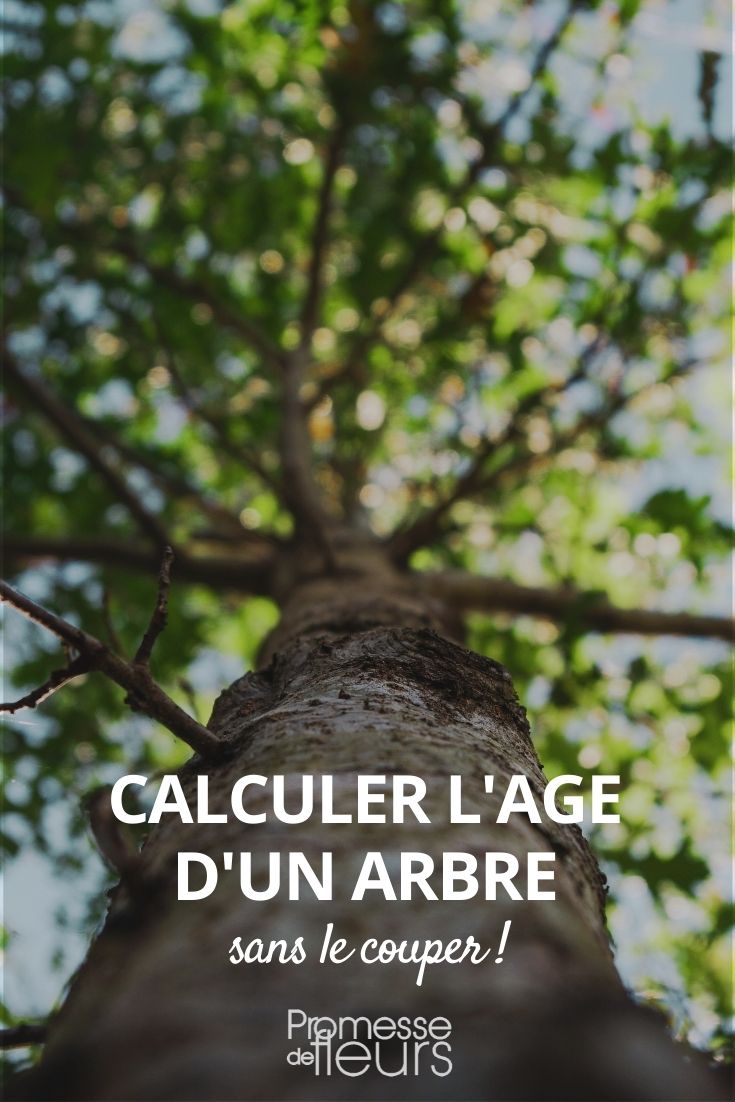







































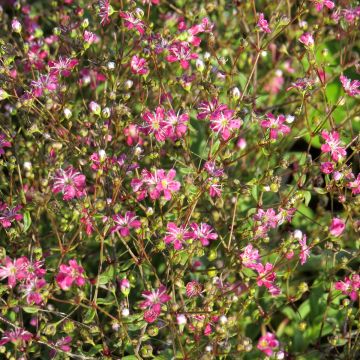

Comments